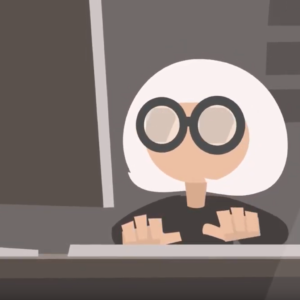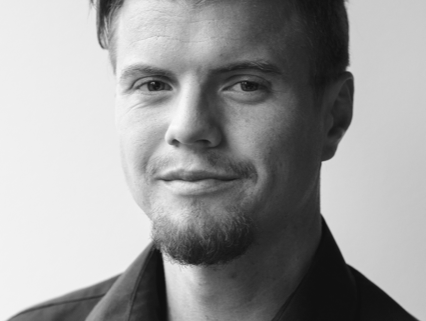Tor Martin Austad, Visual Lab: “Animation has no boundaries”
Having felt drawn to creative work, Tor Martin Austad combined his master degree (MSc) in biology with skills in animation to create Visual Lab. Operating out of Norway, Tor Martin works with universities, scientists, educational institutions and even businesses to fulfil their science communication requirements.
But it is not just about providing a service – Visual Lab also works as a tool to empower people to take control of their research message. If we have all heard that ‘a picture is worth a thousand words’, Tor Martin goes further and tells us that ‘an animation is worth a thousand pictures’. Crastina interviewed him to find out more.
Hi Tor Martin! You created Visual Lab with a wish to communicate science via animation – what made you choose animation as your medium to explore in order to communicate science?
I would not say I chose animation, but rather that animation chose me. I have always been hugely fascinated with animation and would have taken that career path if I had not initially gone down the safer route towards becoming an academic. So when I got a scholarship offer to study animation for two years, I quit my job at the natural history department at Stavanger Museum and went for it.
I quickly saw huge potential in how animation could convey science.
While studying, I quickly saw huge potential in how animation could convey science efficiently, but also in a captivating way. Animation has no boundaries in what to communicate and how to do it. Everything from the microscopic to the cosmic.
I also saw an opportunity. Having these two totally different capabilities combined, it gave me a unique niche in the market and a sorely needed product in the science communication department.
Your tagline is ‘animation that explains’. How is the focus on explaining things incorporated in the process of creating an animation? Do you employ any pedagogical concepts in your animations or the process of creating them?
We focus hugely on the explaining part. In fact, this is our main product, not the animation alone. There are many animation studios out there that make explainer animations, but the animation is not really supplementing any informative value at all. It’s only there for trying to keep your attention with trivial illustrations that can be more distractive than supplementary.
Instead, we build up the script in a particular way that will take them on an informative journey. The illustrations are well thought out and are primarily there to support and supplement what is being said, as visual hooks. The animation of text, illustrations and characters are always leading the eyes where we want them to go, in a very pedagogical manner.

On your webpage you mention a 4-stage-process from first contacting a potential client to reaching the final animation. Do you usually lead the creative process through these four stages? Do you feel scientists leave the creation to you or that they have their own creative ideas and vision?
We are leading the creative process in all stages, but how much creative freedom we get varies a lot with the clients. I understand some feel reluctant in trusting others to convey their valuable scientific message. Others may want to suggest their own creative ideas. The first stage, when writing the script, is where the scientist can influence the direction the most.
In my experience, however, the more the scientist trusts the process and leave it up to us, the better the result. They will always have the opportunity to give feedback in all stages and will never get a completely unexpected end result. If surprised, they have always been pleasantly surprised.
From the projects you have worked on with universities, scientists, educators and other clients, have you identified a main challenge that they have in common and that your animations can unlock?
That’s easy. It is to disseminate their message in a short, clear, informative and engaging way. They can make it informative, but then it won’t be clear nor engaging. Trying to make it engaging, it fails to become educational. To be honest, it won’t be very engaging either.
Crastina is about ‘the communication of science’, consisting of both ‘scientific peer-to-peer communication’ and ‘science dissemination’. What are your thoughts on how to address each of these different tasks, particularly with animation?
Scientists shouldn’t scoff at the idea of using animation for peer-to-peer communication.
Animation is a powerful dissemination tool, especially when introducing a new subject to the public. But it is also very adjustable to which audience it addresses. Scientists shouldn’t scoff at the idea of using animation for peer-to-peer communication. They might think ‘Disney’ when hearing animation. But animation is so much more. For example, I came up with a concept called ‘animated abstract’ where we make an infographic animation from the abstract in the research paper.
I think it’s time that scientists and science communicators start looking at their work as a product that needs marketing. There are so many exciting findings out there and no one knows about it. Investing in marketing, such as making infographic posters and explainer animation will not only make a big impact but also help them get more funding for their research.
- Turning frustration into change: Jean-Sébastien Caux, founder of SciPost - August 9, 2021
- Dr Nicola Nugent: Publishing Manager at the Royal Society of Chemistry - December 7, 2020
- Public Engagement and Trust in Science: In Conversation with Dr. Farzana Meru - November 23, 2020
- Is the peer review process trustworthy? Perspectives by Dr. Jurado Sánchez - November 4, 2020
- Prof. Maria Baghramian: Policy, Expertise and Trust in Action - October 29, 2020
- Prof. Luke Drury: ‘When Experts Disagree’ - October 5, 2020
- Are we what we hear? A reflection on sound, identity and science communication - September 27, 2020
- Sign your Science - September 22, 2020
- Raven the Science Maven - August 18, 2020
- Dr Mark Temple: DNA Sonification or when Scientist are musicians - August 5, 2020





Leave a Reply
Want to join the discussion?Feel free to contribute!